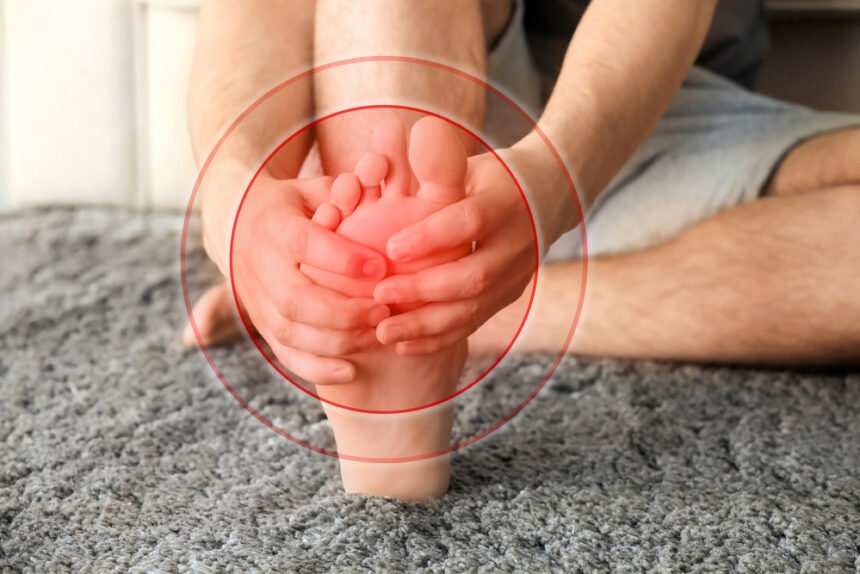Your foot has about 26 bones and 33 joints, making it more prone to injury than most of your other body parts. And while it’s normal to experience sore feet after a long workday, foot pain that persists for weeks or months isn’t normal.
So, how do you deal with foot pain that won’t just go away even after trying simple home remedies such as ice or rest?
Well, rather than using pain relievers, you can try using ball-of-foot pads or cushions. Ball of foot cushions are under-feet pads made with soft gel that address pain in your feet by providing cushioning and absorbing shock.
Want to learn more?
Read on and discover how ball-of-foot pads, among other remedies, can help get rid of your persistent foot pain.
1. Try a Foot Massage
Your feet will benefit from regular massages as a foot rub improves circulation caused by tight or uncomfortable shoes. A foot rubdown can also aid recovery if you have a foot injury and reduce soreness in your feet.
Besides, if your chronic foot pain is caused by plantar fasciitis, a common cause of chronic heel pain, then stretches and foot massages can help relieve the pain.
A deep massage will also help deal with pain caused by flat feet, a condition that occurs when your feet do not have an arch. People who have flat feet often suffer from bunions and plantar fasciitis, leading to inflammation and pain.
Here are steps you can follow to give your painful feet a massage.
- Sit on a bed or a chair and rest one of your foot where you can comfortably reach it
- Rub some skin oil into your hands and gently massage your foot from the heel to the toes
- For a deep massage, increase the pressure as you rub the heel of your hand on your foot and lean in as you continue with the massage
- To stretch the muscle beneath your toes, pull the toes apart or back and forth
2. Get Ball of Foot Cushions
Ball of foot cushions, also known as metatarsal pads, are small shoe modification pads that make your shoes more comfortable.
If you suffer chronic foot pain caused by metatarsalgia, a foot disorder that affects the joints and bones at the ball of your feet, then metatarsalgia cushions will help relieve this pain.
Ball of foot pads are not only good for addressing metatarsalgia pain, but they also help relieve pain caused by plantar fasciitis, blisters, bunions, and calluses.
Metatarsal pads are also perfect for Morton’s neuroma, which often results from wearing high heels. Morton’s neuroma causes sharp pain due to the compression of the bones and nerves in your feet when you wear tight and narrow pointy shoes. Shoes worn by athletes such as running and tennis shoes can also lead to Morton’s neuroma.
A ball of foot cushion is also perfect for a shoe that may lack support or padding as the pad will distribute your body weight evenly in your foot.
3. Wear the Right Shoes
Too much pressure on your toes from wearing ill-fitting shoes causes bunions. Shoes that don’t fit can also cause a hammertoe where your big toe sticks out from its joint. People that suffer from hammertoe may also develop corns or calluses. All these painful pressure points can keep you from enjoying daily activities such as walking or running.
One of the right things to do when you have chronic pain caused by bunions, hammertoe, corns, or calluses is to wear shoes that fit. For instance, footwear that is designed with a wider toe box is perfect for treating bunions. Wearing orthotics can also help alleviate foot pain caused by flat feet.
Besides, if you engage in sports or intense training, ensure you always replace a worn-out shoe for maximum comfort.
4. See a Podiatrist
If your foot pain persists even after trying the above remedies, you should see a podiatrist. A podiatrist or a chiropodist is a trained healthcare professional who is an expert in foot matters.
The trained foot specialist will determine the reason for your foot pain and come up with a treatment plan. A chiropodist may also refer you to a physiotherapist if you need to use exercise or movement to relieve foot pain.
In closing, chronic foot pain doesn’t have to limit your movement or your ability to engage in recreational activities. The above tips can help relieve persistent foot pain. Remember, if your pain seems to worsen even after trying the above remedies, see a doctor or make an appointment with a podiatrist.

